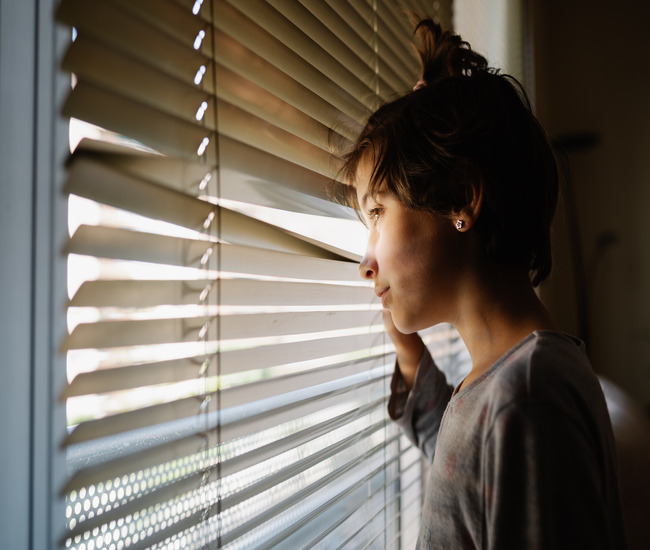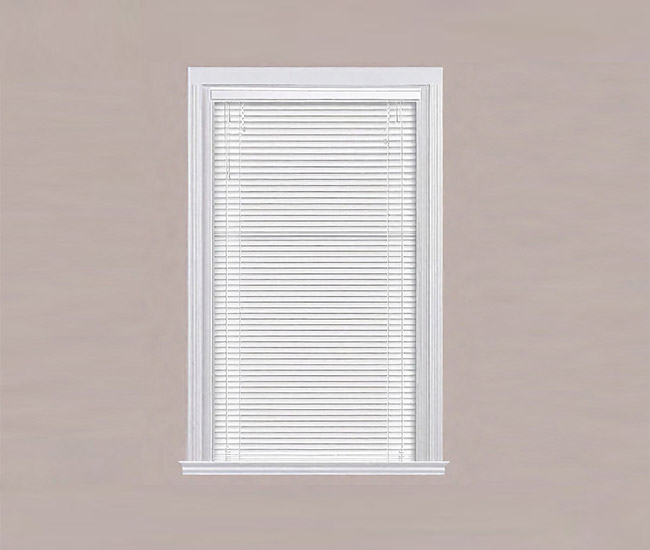Confused about whether woven wood shades or traditional blinds would be best for your needs and settings? You need to learn about their differences and unique potentials to make an informed and futuristic decision. Here’s everything you need to know about the pros and cons of woven wood shades vs traditional blinds. In addition, there are practical suggestions to choose the right type for your settings.
Woven wood shades are two popular window treatments that differ from each other both structurally and functionally. For example, woven wood shades are made from natural woven wood fiber and they are installed in rustic homes for light control, light filtration, and privacy. On the other hand, traditional blinds are made of artificial materials and they are installed in high-humidity areas, like kitchens, laundry rooms, and bathrooms. Horizontal or vertical traditional blinds are also preferred for bedrooms where a blackout or room-darkening effect is required.
Scroll on to learn more about woven wood shades vs. traditional blinds: which is right for you?
What are Woven Wood Shades?

Also called bamboo shades, woven wood shades are a modern version of the 1960s-style bamboo blinds. They are available in lots of other materials, like natural reeds, grasses, rattan, jute, and, of course, bamboo. They are available in lots of styles, ranging from classic fold-up and roll-up designs to top-down and bottom-up styles. These window treatments are used to create a warm, inviting, and cozy atmosphere in your home.
What are Traditional Blinds?

Traditional blinds are window treatments consisting of slats of different widths and lengths, which may be oriented horizontally or vertically. These slats are usually made of synthetic materials, such as vinyl and faux wood. However, blinds made of metal and wooden slats are also available. Different styles of traditional blinds include Roman blinds, roller blinds, Venetian blinds, vertical blinds, and mini blinds. Among them, Venetian blinds are very popular and they are made from horizontal slats.
Pros and Cons of Woven Wood Shades
Learning about the advantages and disadvantages of woven wood shades can be very helpful in making a decision to buy them for your home, office, or other structures. There are some pros and cons of these rustic-style window treatments.
Pros
- Woven wood shades have a natural, organic appearance to add warmth and texture to your room
- Provide some level of light filtering and privacy
- Allow some natural light to sail into your room.
- Can be an eco-friendly option if they are made from sustainable materials
- Can be a good fit for lots of decor styles, like coastal, beach, bohemian, & rustic
Cons
- Woven wood shades may not be as durable as traditional blinds
- They may be more prone to fading and wear and tear over time
- Limited light control and privacy compared to traditional blinds
- Can be a bit difficult to clean and maintain, as the woven fibers can trap dust and dirt
- May not be as effective at insulation (blocking out heat or cold air) compared to traditional blinds
Pros and Cons of Traditional Blinds
Pros
- The classic, streamlined appearance can be a good fit for traditional & modern homes
- Provides a high level of light and privacy control, including blackout functionality
- Durable and easy to clean, requiring occasional dusting or wiping down with a damp cloth
- Can be highly effective at blocking out heat or cold air when lowered or closed
Cons
- Traditional blinds may not provide the warmth and texture of woven wood shades
- They can sometimes look stark or sterile
- Can be more difficult to install compared to woven wood shades
- May not be as eco-friendly, depending on the materials used in production
- May not be as effective at letting in more natural light compared to woven wood shades
Practical Suggestions to Choose Woven Wood Shades or Traditional Blinds for Your Settings
Choosing between woven wood shades and traditional blinds for the windows of your home, office, or other building can be a tough decision. Here are some practical suggestions to help you determine which type of window treatment is right for you:
Style and Aesthetics
Woven wood shades have a natural, organic look and feel, which can work well in a variety of settings, including coastal, beach, bohemian, and rustic homes. If you’re looking for a window covering that adds texture and warmth to your interior space, woven wood shades would be an excellent option. On the other hand, traditional blinds have a more classic, streamlined appearance that can be a good fit for traditional or modern settings.
Light and Privacy Control

Woven wood shades for windows are great for letting some natural light into your room, while still maintaining privacy. You can adjust them to let in just the right amount of natural light. Meanwhile, their natural materials can help you to filter light in a way that creates a warm, inviting atmosphere. If you’re looking for a window covering option that provides more privacy, insulation, and light-blocking capabilities, traditional blinds would be a better choice.
Maintenance Needs

Woven wood shades are relatively low-maintenance window treatments, requiring only occasional dusting or vacuuming. However, they may not be as durable as traditional blinds, and can be more prone to wear and tear over time. Traditional blinds are typically more durable and easy to clean, but they may require more frequent cleaning to maintain their appearance.
Energy Efficiency Requirements
Both woven wood shades and traditional blinds can help to insulate your windows and improve energy efficiency. However, traditional blinds may be more effective at blocking out heat and reducing glare when closed.
Are Woven Wood Shades and Traditional Blinds Safe for Kids and Pets?

Yes, both woven wood shades and traditional blinds can be a safe window covering option for homes and other spaces with young children and pets. They come with different cordless lift mechanisms, like motorized and smart lift systems. If you go for a smart lift option, you will be able to operate your window treatments with voice commands or a smartphone app.
Summing Up
While both types of window treatments have their pros and cons, the decision between woven wood shades and traditional blinds will depend on your personal needs and preferences. Consider the factors like style, functional potential, and maintenance requirements before making a choice.
FAQs
What are the disadvantages of woven wood shades?
- Woven wood shades are more susceptible to change due to sun and moisture.
- Unless protected with a blackout or heat-resistant liner, the wood slats and bamboo rods can fade and crack over time.
- They are not suitable for high moisture areas like bathrooms, kitchens, and laundry rooms.
- They are more expensive upfront than traditional window blinds, like venetians, mini blinds, and faux wood blinds.
Are woven wood shades out of style?
No. Woven wood shades are in style and will stay stylish for years due to their longevity, customization, and design versatility, which makes them a worthwhile investment. Handcrafted from natural wood (bamboo, reed, grasses) materials, woven wood shades are typically more expensive than vinyl, aluminum, or faux wood blinds but their aesthetic, durability and functionality makes them worth the price.
Is it better to have blinds and shades?
Shades are made of a single piece of fabric (usually sheer light filtering), offering both natural light and privacy. On the other hand, blinds are made of slats and offer total privacy and light control when closed or most visibility and lots of light when open. If you are looking for both privacy and light control, shades are a better option, otherwise go with blinds.
Can you see through woven wood shades at night?
Whether or not you can see through woven wood shades at night will depend on the material, the tightness of weave, and the lining you might have added to your window treatments. Tightly woven bamboo woven wood blinds lined with an opaque fabric will provide total two-way privacy during the day and night. On the other hand, loosely woven bamboo blinds with a sheer fabric lining will allow some visibility at night, offering only partial privacy.
What are the disadvantages of faux wood blinds?
While faux wood blinds are inexpensive and can withstand high moisture, they do come with some drawbacks, such as:
- Faux wood blinds are heavier than real wood blinds and aluminum blinds, making them a challenge to install.
- The faux wood slats are susceptible to fading due to prolonged exposure to the direct sun.
- Some homeowners find them less attractive than real wood blinds.
Need More Help?
Still unable to decide between woven wood shades and traditional blinds for your windows? Get a free consultation now! Use 24/7 live chat or give us a call at (800) 863-6109 to contact our design experts for custom or DIY window treatment solutions.
